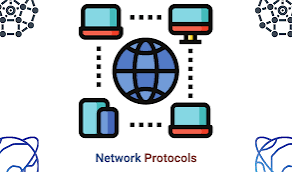
Common Network Protocols You Should Know in 2024: Essential Guide for Tech Enthusiasts
Created on 6 November, 2024 • Technolgy • 16 views • 2 minutes read
In today’s hyper-connected world, understanding network protocols is crucial. Whether you’re a tech professional or just a curious learner, knowing how these protocols work can give you insights into the digital backbone of our communication systems.
1. HTTP/HTTPS (Hypertext Transfer Protocol)
What It Is: The foundation of data exchange on the internet, HTTP is used for accessing web pages, while HTTPS adds a layer of security via SSL/TLS encryption.
Why It’s Important: HTTPS ensures that sensitive data, like your bank login details, remains private and secure during transmission.
Real-World Impact: With growing concerns about cybersecurity, HTTPS has become a must-have for all websites.
2. TCP/IP (Transmission Control Protocol/Internet Protocol)
What It Is: A set of rules governing how data is transmitted over the internet. TCP ensures reliable data transfer, while IP handles addressing and routing.
Why It’s Important: TCP/IP is the foundation of the internet, allowing diverse devices to communicate seamlessly.
Fun Fact: Without TCP/IP, your emails, texts, and calls would have no reliable way to travel from sender to receiver.
3. DNS (Domain Name System)
What It Is: Often referred to as the internet’s phonebook, DNS translates domain names (like google.com) into IP addresses that computers use to communicate.
Why It’s Important: Without DNS, you’d have to remember IP addresses to access websites, making browsing inconvenient and complex.
Example: Every time you type a website URL, a DNS server works behind the scenes to connect you to the right site.
4. FTP (File Transfer Protocol)
What It Is: A protocol used to transfer files between a client and a server over a network.
Why It’s Important: Despite newer methods, FTP is still widely used in web development and for transferring large files.
Security Note: Use SFTP (Secure File Transfer Protocol) for encrypted transfers to prevent data breaches.
5. SMTP, IMAP, and POP3 (Email Protocols)
SMTP (Simple Mail Transfer Protocol): Used for sending emails.
IMAP (Internet Message Access Protocol): Allows you to access and manage emails directly on the mail server.
POP3 (Post Office Protocol 3): Downloads emails to your device, removing them from the server.
Why They’re Important: These protocols make email communication possible, each serving different user preferences and needs.
6. DHCP (Dynamic Host Configuration Protocol)
What It Is: Automatically assigns IP addresses to devices on a network.
Why It’s Important: Simplifies network management by eliminating the need for manual configuration.
Use Case: Every time you connect to Wi-Fi, DHCP assigns your device an IP address, allowing you to browse effortlessly.
7. ARP (Address Resolution Protocol)
What It Is: Maps IP addresses to physical MAC addresses on a local network.
Why It’s Important: Ensures data packets reach the right hardware within the same network.
8. SNMP (Simple Network Management Protocol)
What It Is: Used for monitoring and managing network devices like routers, switches, and servers.
Why It’s Important: Essential for network administrators to ensure the health and performance of networks.
Why Understanding Network Protocols Matters
Network protocols enable seamless communication and are the unsung heroes behind our online interactions. Whether you’re troubleshooting network issues, setting up servers, or understanding cybersecurity, a solid grasp of these protocols can make a world of difference.
Popular posts
-
Coin Master free spins & coins daily links January 2023Games • 2,781 views
-
AI in Healthcare: Advancements and ChallengesTechnolgy • 1,615 views
-
7 Simple Steps to Rank Number 1 in Google SearchTechnolgy • 1,297 views
-
E-commerce EvolutionTechnolgy • 989 views
-